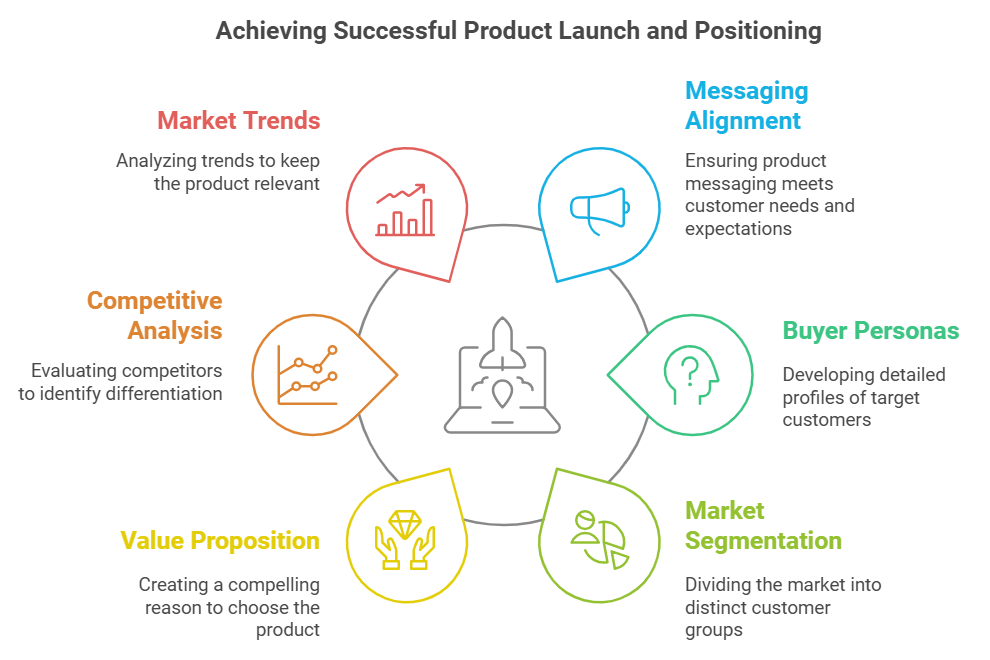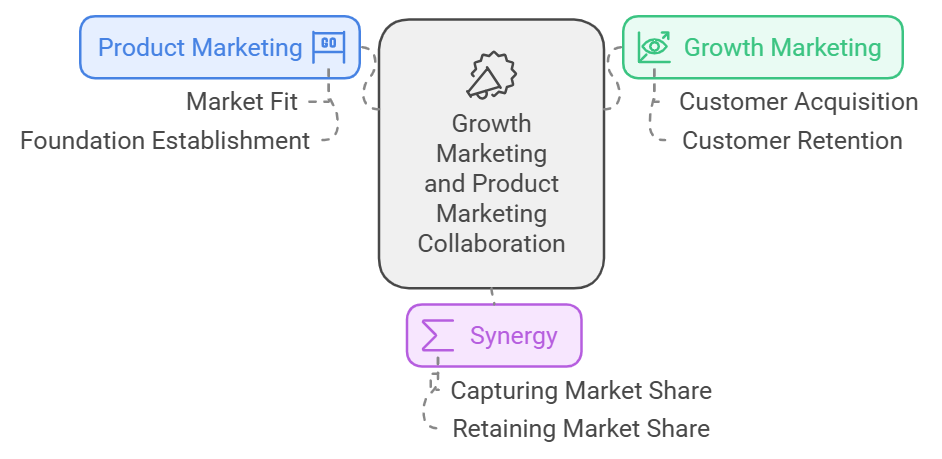Custom WordPress Development (2025 Definitive Guide)
Build a unique, high-performance website with our 2025 guide to custom WordPress development. Learn advanced tactics.

Explore the key differences between growth marketing and product marketing, their roles, and how they drive business success.
In today’s rapidly evolving marketing landscape, businesses are presented with various strategies to drive their growth and product success. Two commonly misunderstood yet crucial strategies are growth marketing and product marketing.
Although these two marketing approaches may seem interchangeable at first glance, they focus on different objectives and require unique methodologies to achieve their respective goals.
Understanding the distinction between growth marketing and product marketing can help businesses make informed decisions about which strategy is best suited for their specific needs.
Whether you’re a startup looking to scale or an established company launching new products, choosing the right approach will significantly impact your success. This blog delves deep into these marketing strategies, explaining their differences and when to use each.
Growth marketing is a data-driven, experimental approach aimed at rapidly expanding a company’s customer base, improving conversion rates, and maximizing retention. Unlike traditional marketing, which might focus solely on top-of-the-funnel awareness, growth marketing spans the entire customer journey, from acquisition to retention and beyond.
Growth marketers prioritize optimizing the user experience at every touchpoint to ensure long-term engagement and sustainable growth.
By focusing on testing, analysis, and iteration, growth marketing allows businesses to identify and capitalize on the most effective channels and tactics to drive results. This approach emphasizes constant experimentation, leveraging insights from customer behavior to inform strategies.
Successful examples of growth marketing include Dropbox’s famous referral program, which helped the company rapidly grow its user base. You can read more about how growth marketing drove Dropbox’s success in this source.
At its core, growth marketing is about scaling. It focuses on increasing customer acquisition, improving conversion rates, and reducing churn through continuous optimization.
Growth marketers aim to experiment with various tactics, such as A/B testing, email automation, and funnel optimization, to discover what works best for a given audience.
Growth marketing also emphasizes understanding the customer’s journey and creating strategies to engage users at every stage, from awareness to loyalty. This allows companies to create a seamless experience that not only attracts new customers but keeps them coming back.
Some of the key strategies in growth marketing include:
Growth marketing strategies typically use data and analytics to drive decisions. Understanding what works and doubling down on those tactics is key to long-term success.
While growth marketing focuses on scaling a business, product marketing is more concerned with positioning a product within the market and ensuring that it resonates with its intended audience.
Product marketers focus on developing and communicating the value proposition of a product, crafting messaging, and launching new products to market.
Product marketing begins with in-depth market research to understand the needs, preferences, and pain points of potential customers. The goal is to ensure the product solves real customer problems and is positioned in a way that makes it stand out from competitors. You can read more about the fundamental elements of product marketing in this source.
The primary objective of product marketing is to successfully launch and position a product in the market. Product marketers work to ensure that the product’s messaging aligns with customer needs and expectations, which often involves developing detailed buyer personas and market segmentation strategies.

Another important goal is to create a compelling value proposition that differentiates the product from its competitors. This involves conducting competitive analysis, analyzing market trends, and making adjustments to product positioning to ensure that the product remains relevant and valuable to its audience.
Product marketing strategies revolve around creating the perfect fit between the product and the customer. Key tactics include:
A great example of product marketing can be found in Hotjar’s product messaging, where the company consistently refines its messaging to ensure its tools resonate with users. Learn more about Hotjar’s approach in this source.
The most significant difference between growth marketing and product marketing lies in their primary focus. Product marketing is centered on the product itself—its features, benefits, and how it fits into the market. It’s about ensuring the product meets customer needs and is well-positioned to compete.
On the other hand, growth marketing focuses on scaling the business. Growth marketers are less concerned with the specifics of the product and more focused on acquiring customers, increasing engagement, and optimizing the overall customer journey. You can find a more detailed comparison in this source.
Growth marketing involves constant experimentation. Growth marketers test different marketing channels, messages, and tactics to find what works best. It’s a data-driven approach that requires agility and flexibility to adapt to new insights.
In contrast, product marketing is more stable. Once the product’s positioning and messaging are established, the focus shifts to maintaining consistency in how the product is presented across all channels.
Growth marketing aims to expand the customer base as quickly as possible, often experimenting with broader audiences to see which segments respond best. Product marketing, however, is more focused on carefully defining the target audience and ensuring the product messaging resonates with that specific group.
The metrics used to measure success also differ between the two. Growth marketing focuses on metrics such as:
In contrast, product marketing success is measured through:
Though growth marketing and product marketing have different objectives, they can work together for maximum impact. Product marketers establish the foundation by ensuring the product fits the market, while growth marketers scale the product’s reach through customer acquisition and retention efforts.
The two strategies can complement each other, especially for companies that are simultaneously launching new products and trying to grow their customer base. Aligning product marketing and growth marketing efforts ensures the business can capture and retain market share.

Growth marketing is particularly effective for startups and companies in the scaling phase. At this stage, experimentation is key to finding the most effective marketing channels and growth tactics. It’s also ideal for businesses that already have a product-market fit but need to focus on increasing their reach and revenue.
Product marketing is essential when launching new products or entering new markets. It’s the go-to strategy for creating awareness and demand for a product by positioning it effectively. Product marketing is particularly important for companies in competitive industries where differentiation is key to success.
Dropbox is a classic example of successful growth marketing. Its referral program allowed users to earn free storage space by referring friends. This incentivized sharing and led to viral growth. By focusing on rapid user acquisition, Dropbox was able to expand its customer base significantly.
Hotjar excels at product marketing by consistently refining its messaging to ensure its analytics tools resonate with its target audience. By clearly communicating the product’s value and how it solves user pain points, Hotjar has managed to differentiate itself in a crowded market.
Growth marketing will continue to evolve with advances in data analytics, AI, and automation. These tools will allow growth marketers to experiment more effectively and personalize their strategies at scale.
Similarly, product marketing is expected to become even more customer-centric. As AI and machine learning advance, product marketers will be able to create more personalized experiences, leading to higher customer satisfaction and retention.
In conclusion, while growth marketing and product marketing serve different purposes, both are essential to a business’s success. Understanding when to use each can help companies better allocate resources and maximize their impact.
Whether you’re looking to scale or refine your product’s market position, both approaches can work together to help your business grow.
If you’re looking for a more comprehensive strategy, combining both growth marketing and product marketing might just be the key to your success. Discover more about our growth consulting services at DemandLoft.